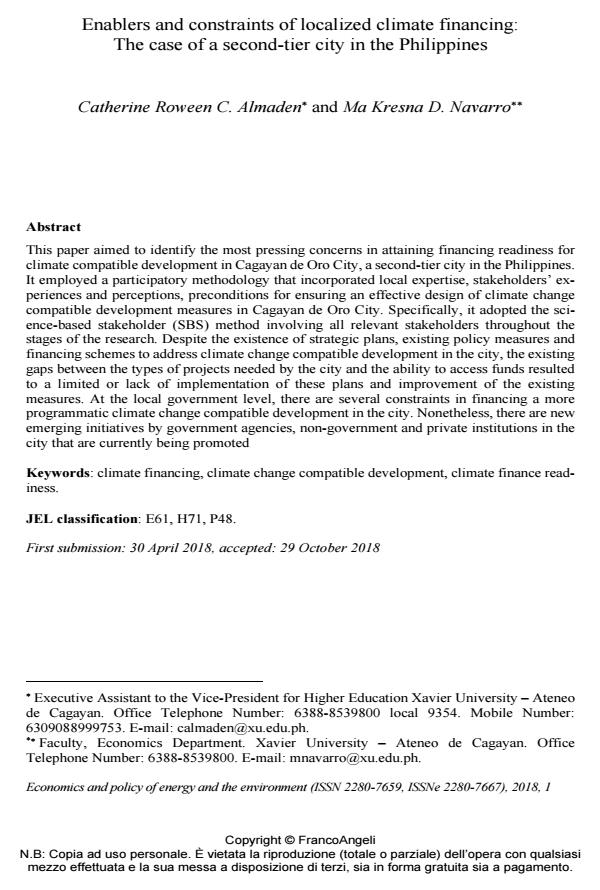Enablers and constraints of localized climate financing: The case of a second-tier city in the Philippines
Journal title ECONOMICS AND POLICY OF ENERGY AND THE ENVIRONMENT
Author/s Catherine Roween C. Almaden, Ma Kresna D. Navarro
Publishing Year 2019 Issue 2018/1
Language English Pages 33 P. 191-223 File size 563 KB
DOI 10.3280/EFE2018-001009
DOI is like a bar code for intellectual property: to have more infomation
click here
Below, you can see the article first page
If you want to buy this article in PDF format, you can do it, following the instructions to buy download credits

FrancoAngeli is member of Publishers International Linking Association, Inc (PILA), a not-for-profit association which run the CrossRef service enabling links to and from online scholarly content.
This paper aimed to identify the most pressing concerns in attaining financing readiness for climate compatible development in Cagayan de Oro City, a second-tier city in the Philippines. It employed a participatory methodology that incorporated local expertise, stakeholders’ experiences and perceptions, preconditions for ensuring an effective design of climate change compatible development measures in Cagayan de Oro City. Specifically, it adopted the science-based stakeholder (SBS) method involving all relevant stakeholders throughout the stages of the research. Despite the existence of strategic plans, existing policy measures and financing schemes to address climate change compatible development in the city, the existing gaps between the types of projects needed by the city and the ability to access funds resulted to a limited or lack of implementation of these plans and improvement of the existing measures. At the local government level, there are several constraints in financing a more programmatic climate change compatible development in the city. Nonetheless, there are new emerging initiatives by government agencies, non-government and private institutions in the city that are currently being promoted
Keywords: Climate financing, climate change compatible development, climate finance readiness.
Jel codes: E61, H71, P48
Catherine Roween C. Almaden, Ma Kresna D. Navarro, Enablers and constraints of localized climate financing: The case of a second-tier city in the Philippines in "ECONOMICS AND POLICY OF ENERGY AND THE ENVIRONMENT" 1/2018, pp 191-223, DOI: 10.3280/EFE2018-001009